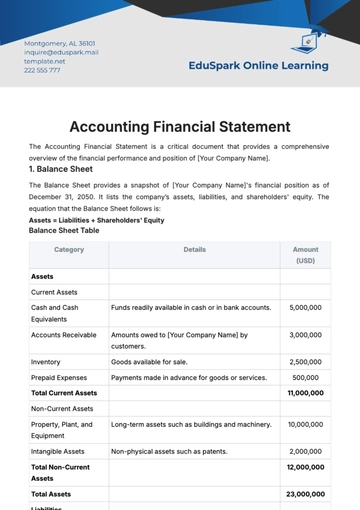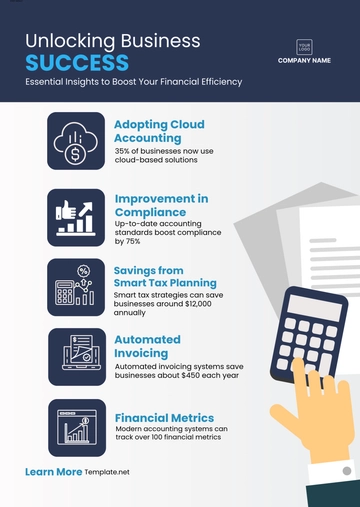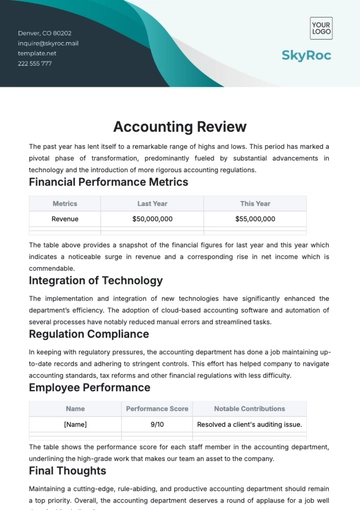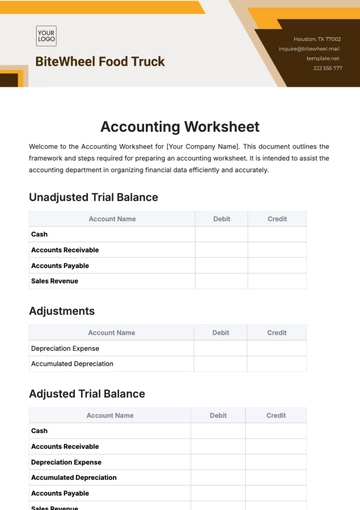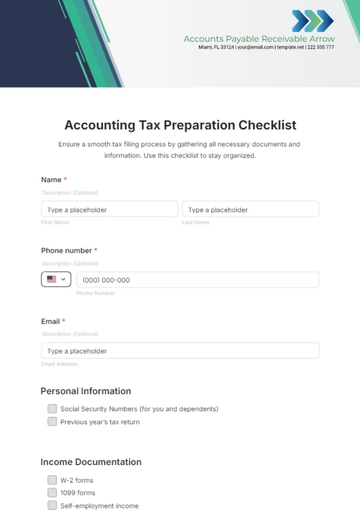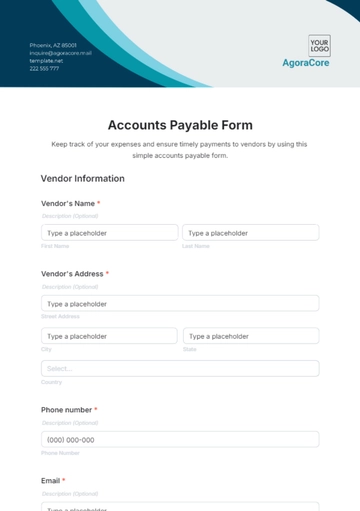Free Internal Audit Accounting Crisis Management Protocol
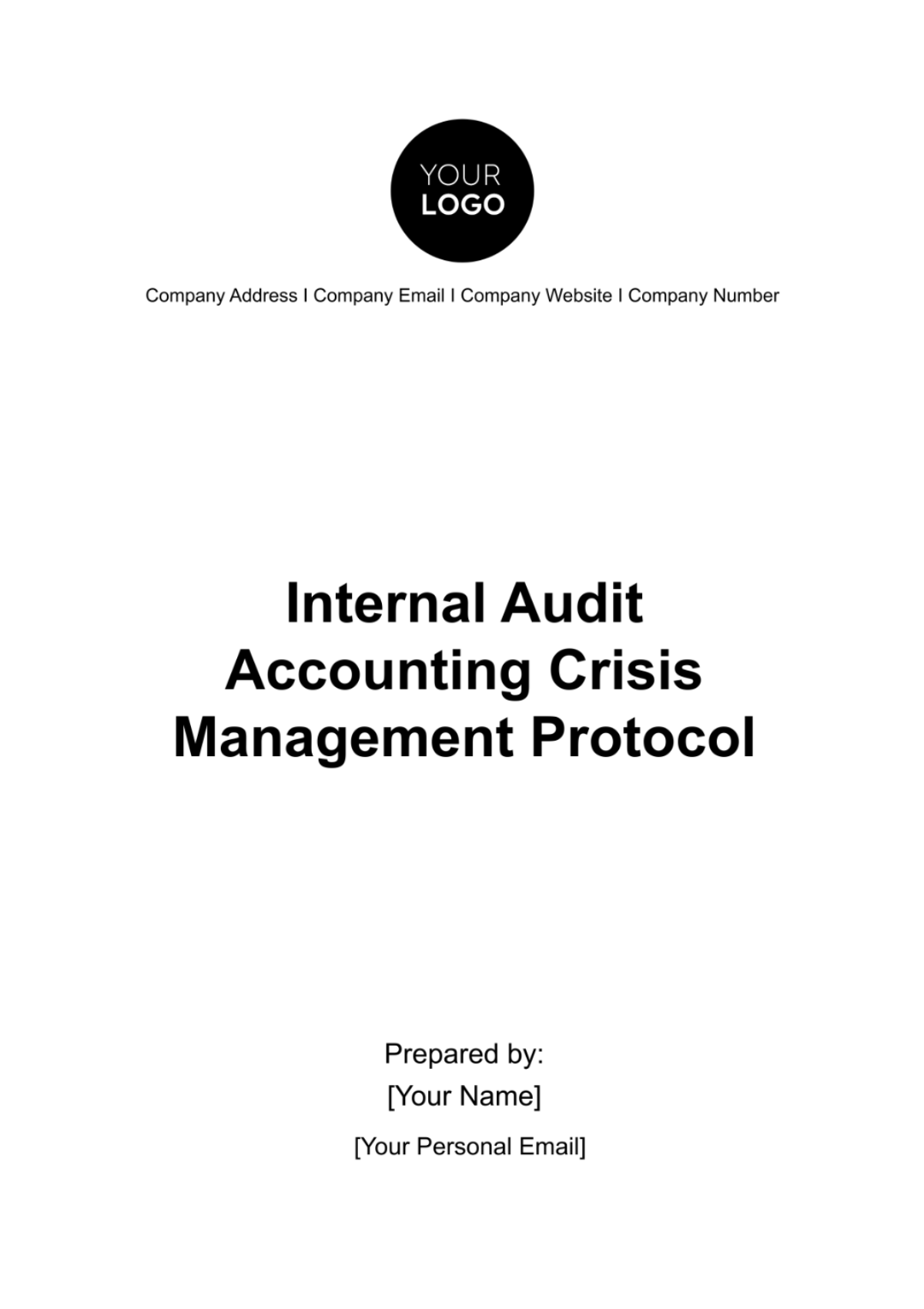
This document outlines the Internal Audit Accounting Crisis Management Protocol (IAACMP), designed to address potential business accounting crises, ensuring the stability of financial operations during crisis situations. This protocol's objective is to ensure accurate handling of business accounting data during a crisis. It includes steps to identify, assess, manage, and resolve crises in a systematic, thorough, and timely manner. Expectation for all employees to adhere to these protocols is paramount for efficient crisis management.
1. Crisis Identification
The initial phase in the IAACMP is the identification of potential crises that could disrupt accounting operations. This stage is crucial for early detection and involves a vigilant approach to monitoring accounting data for any signs of discrepancies or irregularities. The identification process is twofold:
a. Regular Audits and Monitoring
Internal audits play a pivotal role in the early detection of potential crises. Regular and thorough audits should be conducted to scrutinize the accounting records, ensuring that any anomalies are detected promptly. This proactive approach facilitates the early identification of issues before they escalate into significant crises.
b. Reporting Mechanisms
A robust reporting mechanism is essential for effective crisis identification. Employees at all levels should be encouraged and trained to report any inconsistencies or unusual activities within the accounting data. This culture of transparency and vigilance is vital for the early detection of potential issues.
2. Assessment & Prioritization
Upon identification of a potential crisis, a comprehensive assessment is undertaken to evaluate its impact on the organization's financial operations. This assessment is critical in understanding the magnitude of the crisis and its potential repercussions on the organization.
a. Impact Analysis
The impact analysis involves a detailed examination of how the identified issue could affect the organization's financial health and operational stability. Factors such as financial loss, reputational damage, and regulatory implications are considered during this analysis.
b. Prioritization Criteria
Following the impact analysis, crises are prioritized based on their severity and the immediacy of the threat they pose. Prioritization ensures that resources are allocated efficiently, focusing on mitigating the most critical issues first. This strategic approach helps in minimizing the adverse effects on the organization's operations.
3. Crisis Management Team
The formation of a Crisis Management Team (CMT) is a cornerstone of the IAACMP. This team comprises individuals with diverse expertise, including internal auditors, financial managers, and other essential personnel, who are equipped to manage and resolve the crisis effectively.
a. Team Composition
The composition of the CMT is carefully selected to ensure a comprehensive skill set that can address various aspects of the crisis. The team includes but is not limited to:
Internal Auditors: To provide insights into the accounting anomalies and guide the auditing process.
Financial Managers: To assess the financial implications and guide financial strategy.
Legal Advisors: To provide legal perspective and compliance guidance.
IT Specialists: To address any technological aspects related to the crisis, such as data breaches or system failures.

Fig 1: Flowchart Example of Internal Audit Accounting Crisis Management Action Plan
b. Strategic Crisis Management Plan
The CMT, utilizing the assessments, develops a Strategic Crisis Management Plan tailored to address the specific crisis at hand. This comprehensive plan outlines:
Action Steps: Clear, actionable steps to be taken to manage and resolve the crisis.
Timeline: A realistic timeline for the implementation of the action steps.
Communication Strategy: A plan for communicating with internal and external stakeholders throughout the crisis.
Contingency Measures: Backup plans in case the initial response needs to be adjusted.
The Strategic Crisis Management Plan is a dynamic document, subject to revisions as the situation evolves. It requires approval from senior executives before implementation and must be communicated effectively to all relevant departments.
The IAACMP provides a robust framework for managing accounting crises, ensuring the organization's financial operations remain stable during turbulent times. Through systematic identification, thorough assessment, and strategic management by a dedicated CMT, the protocol aims to mitigate risks and safeguard the organization's financial integrity.
4. Strategic Crisis Management Plan
The development of a Strategic Crisis Management Plan is a critical phase within the IAACMP, spearheaded by the Crisis Management Team (CMT). This plan is a comprehensive blueprint designed to address the nuances of the identified crisis, ensuring a cohesive and efficient response.
a. Plan Development
The CMT collaborates to draft a plan that is both actionable and adaptable. This involves:
Defining Objectives: Setting clear, achievable goals for the crisis management process, aligned with safeguarding the organization's financial stability and maintaining operational continuity.
Roles and Responsibilities: Assigning specific tasks to team members based on their expertise and defining the hierarchy of decision-making to streamline the response efforts.
b. Action Plan
The action plan includes detailed steps tailored to the nature of the crisis, such as:
Immediate Actions: Steps to contain the crisis and prevent further escalation.
Mid-term Actions: Strategies to manage the ongoing impact of the crisis on financial operations.
Long-term Actions: Measures to restore normal operations and mitigate future risks.
c. Timelines
Timelines are established for each phase of the plan, providing clear deadlines for critical actions and decision points. This helps in maintaining momentum in the crisis resolution process and ensures timely progress.
d. Communication Strategy
A robust communication strategy is integral to the plan, encompassing:
Internal Communication: Keeping employees informed about the crisis and their roles in the management process.
External Communication: Managing information flow to stakeholders, including investors, clients, and regulatory bodies, to maintain trust and transparency.
e. Contingency Plans
Contingency plans are outlined to address potential setbacks or escalations, ensuring the organization is prepared to adapt its response as the situation evolves.
5. Implementation of the Crisis Management Plan
With the Strategic Crisis Management Plan approved, its implementation becomes the focus. The CMT oversees this phase, ensuring the plan's directives are executed efficiently and effectively.
a. Execution Monitoring
The CMT monitors the implementation of the plan closely, ensuring adherence to the outlined steps and timelines. This involves:
Regular Check-ins: Scheduled meetings to review progress, address challenges, and ensure tasks are completed as planned.
Adaptability: Being prepared to adjust the plan in response to new developments or unforeseen challenges, ensuring the response remains relevant and effective.
b. Resource Allocation
Resources, both human and financial, are allocated as per the plan's requirements. This ensures that all teams involved have the necessary support to carry out their responsibilities effectively.
c. Stakeholder Engagement
Continuous engagement with stakeholders is maintained throughout the implementation phase. Regular updates are provided to keep all parties informed and involved, reinforcing confidence in the organization's handling of the crisis.
6. Post-Crisis Review
Following the resolution of the crisis, a thorough post-crisis review is conducted to assess the response's effectiveness and derive learnings for future improvements.
a. Evaluation of Response
The review assesses various aspects of the crisis management process, including:
Efficiency: How effectively and timely the crisis was managed.
Decision-Making: The effectiveness of the decision-making process and the impact of decisions made.
Communication: The effectiveness of internal and external communication strategies.
b. Lessons Learned
This stage is crucial for organizational learning and development. It involves identifying:
Successes: What worked well in the crisis management process and why.
Challenges: What obstacles were encountered and how they were overcome.
Areas for Improvement: Aspects of the response that could be enhanced for future crises.
c. Updating Protocols
Based on the insights gained from the review, the IAACMP and related protocols are updated to incorporate the learned best practices and address identified weaknesses. This ensures the organization is better prepared for future crises.
d. Reporting and Dissemination
Findings from the post-crisis review are compiled into a comprehensive report, which is then shared with key stakeholders, including senior management, department heads, and relevant employees. This transparency ensures that the entire organization benefits from the lessons learned, fostering a culture of continuous improvement and resilience.
In conclusion, the Strategic Crisis Management Plan, its implementation, and the subsequent post-crisis review are pivotal components of the IAACMP. They ensure that the organization not only navigates through crises with minimal disruption but also emerges stronger, more informed, and better prepared for future challenges.
- 100% Customizable, free editor
- Access 1 Million+ Templates, photo’s & graphics
- Download or share as a template
- Click and replace photos, graphics, text, backgrounds
- Resize, crop, AI write & more
- Access advanced editor
Introducing Template.net's Internal Audit Accounting Crisis Management Protocol Template! Our meticulously crafted document provides a comprehensive framework for navigating financial crises. Editable with our AI editor tool, it empowers your team to swiftly respond to emergencies, ensuring financial stability. Simplify crisis management with this essential resource, backed by our expertise in technical writing.











